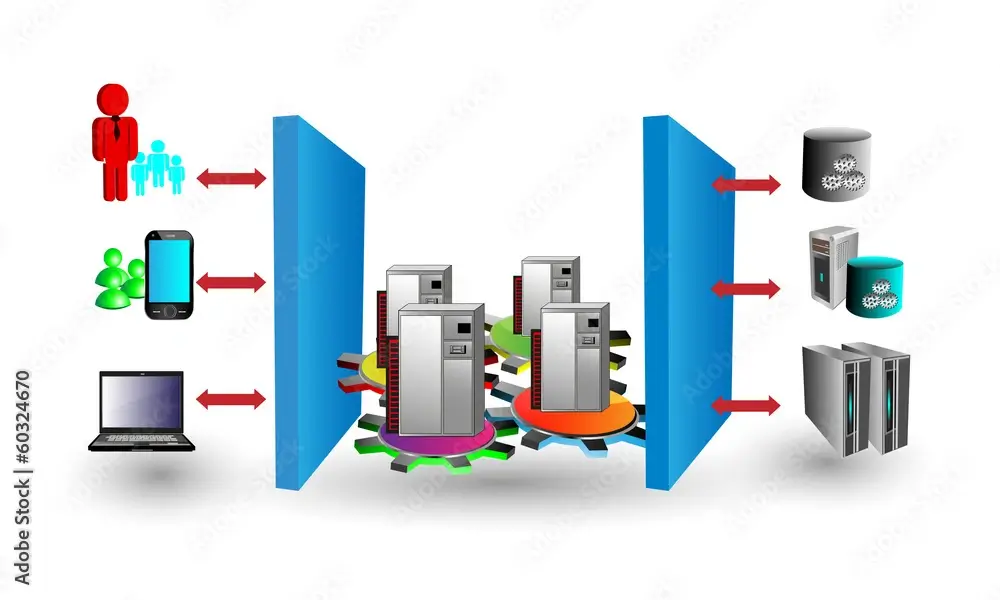
The virtual world has become more than just an online extension of our daily lives; it’s also given us new ways to handle complex business operations. Software isn’t confined to carrying out these tasks but can even assist you with your routine activities.
Whether you’re using it or experiencing its effects, there’s no doubt that software is involved in most aspects and activities today – from managing your finances through emailing friends on social media platforms like Facebook to tracking down lost items online with apps such as Amazon Prime Now! But did you know all this fuss behind what we see before us? The answer lies within software engineering: how things work internally – the inner workings, which can often go unnoticed by users because they don’t understand their complexity.
We all know that developing software is not an easy task. It’s filled with many stages and demands a solid foundation to ensure you’re turning out as a product-market fit for your business. This post is a real guide to exploring the nitty-gritty of what makes up architecture to create unique products while cutting downtime or money spent on development costs.

What is Software Architecture?
Software design is transforming an idea into a functioning computer program. The software architecture is the foundation over which it’s built. Software Architecture models provide guidelines for designing these programs and describe how they work together as part of your system’s bigger picture, whether for personal or business use. The robust blend offers scalability and adaptivity for future needs, ensuring that your current project remains relevant in years to come.
Software architecture is integral to today’s digital world as it impacts everything from quality, performance, and maintainability to success. Ignoring this role will just put your system at risk in these changing times, where every decision can affect you out of the box.
What are the Fundamentals of Software Architecture?
Have you heard of design patterns that provide solutions to possible problems? The same kinds also exist at a broader level – software architecture patterns. Software architecture is an overall layout for your application and includes its own benefits! Let’s explore some common ones now.
Layered (n-tier) Architecture

A layered architecture is a typical pattern used in modern software design. It’s similar to what scientists call a self-fulfilling prophecy – where you build something based on something else, and then it turns out just as expected! The popular frameworks that Drupal, Java EE, or Express are built around this approach because they allow developers more freedom when designing their applications while saving time during the software product development process.
The layered architecture is a great way to keep your codebase maintainable and testable. It allows you to assign different roles for each layer so that it’s easy enough to update them independently from one another without affecting anything else in the system, too.
The layered architecture is a good choice for those looking to quickly build new apps, as it reflects traditional IT processes and strict standards of maintainability and testability standards. Additionally, this is one of the software architecture models that can work well if you’re a newbie software developer and don’t know any other way.
Event-driven Architecture

The Event-driven architecture is a clean architecture to process data efficiently. The data is easily scalable and adaptable to complex environments with an event-driven architecture. It also makes it possible for new event types to appear on future occasions where they may need processing without affecting other modules within this system. The Event-driven Architecture allows you to keep track of what’s happening and easily handle those changes in data-intensive applications.
The event-driven architecture is one of the great ways to design user interfaces for apps with asynchronous systems and data flow. This application style works well in apps where modules only interact at a limited frequency or when needed.
Microkernel Architecture
The microkernel is part of an app that deals with the differences between basic routines and higher-order rules. It contains only those parts necessary to display or edit files in this case, so it can be tailored specifically for each task at hand without becoming too complex overall.
These types of programs can be used repetitively in different patterns, depending on how much data or tasking needs to get done at one time period – which means that if you’re looking into developing an application using this design pattern, then your code will have more consistent behavior across all instances because each part follows its set path through execution rather than intertwined like tangled noodles without any order whatsoever.
Microservices Architecture
Microservice architecture is an innovative software design that encourages the development of multiple tiny programs and modules. These services can be easily changed or upgraded without affecting other parts, making it ideal for situations where you need to add new features quickly, like microkernel systems, but still want them seamlessly integrated into your existing codebase.
Microservice architecture is perfect for websites with increasing small components or a new web business and app. It also works well when your organization has clear boundaries in corporate environments and you need to develop multiple sites globally to meet those demands at once.
Space-based Architecture

Space-based architecture is a way to keep databases running smoothly, even when usage reaches peak levels. It does this by using multiple servers that can share data efficiently, so there’s no need for crashes or system failures during overloads. So, it helps businesses stay safe from unpredictable spikes while keeping them up all day long.
The Space-based architecture style that relies on space is excellent for high-volume data, including user logs and clickstreams. This type of system can also handle social media platforms with low value but still need to be stored to avoid losing any information, which would cause significant consequences if it were gone forever.
How to Save Time and Money by Using the Right Software Architecture?

The architectural patterns determine how well an application integrates with other systems; It’s crucial not only because it affects the overall performance but also to determine whether or not any given project will be vulnerable during its lifespan. But how can a software architecture save money and time?
For example, you want to build an application that can be accessed on phones, tablets, laptops, and PCs. Also, you want to access the same application in different countries in different languages. It’s 4 to 5 versions of the same application.
Here’s how the architecture will save you time and money. The above-stated example needs n-Tier architectural characteristics. We only have to build one application instead of three or more versions. The presentation layer (what’s seen on a browser), the application layer(the business logic), and the database layer (storage) are all combined in this single tier, making development more effortless than ever before because there’s no need for multiple software packages or frameworks.
In n-tier architecture, you can have multiple presentation layers on top of a single application. This drastically decreases both build time and maintenance effort because it makes changes more manageable for the development team; rather than maintaining five separate applications with different features, each requiring updates in case there are any issues during the software development life cycle or after release – only one app will need adjustments when something goes wrong.
The architecture of your business app is an important decision that will determine its success in the long run. The right software approach might define how it functions, what issues may arise during implementation, and why one solution over another would be more suitable for you as a company or individual user looking to implement this type of product/service with such needs now.
The comprehensive overview of software architecture patterns listed above can help businesses determine which design best suits their business and provides them with profitable results. You need to analyze your current strategy, technical basis, aspects of software architecture, technology stacks, and architecture principles, then choose the right one for you!
Wrapping Up
Software architecture is a tricky thing to master. You can expect more from it in the years ahead, with robust workflows ensuring consistent and superior quality throughout our lifetime and understanding software architecture principles while saving the development team their time and effort – but what about end customers? Will they be impressed enough? Guess what? This idea turns out to be a win-win situation.
Suppose you are looking for a reliable source for all your software solutions or looking to build robust software for your business needs. In that case, the exquisite software product development team and experts here will make you land in a better place to accelerate your business through hassle-free software using effective software architectures to support your growth. Contact us via email or call to consult your queries and concerns about building your customized software/application.
Frequently Asked Questions
1. What does a software architect do?
Software architects are experts in developing and designing computer software, knowing the perfect software metrics, and in the art of visualizing software architecture (developer to architect). They communicate with businesses to create solutions, including building websites and system administration tools. A great thing about being a Software Architect is that you get input into every aspect of your project, even down to deciding what technologies should be used for specific tasks – developer, designer, and communicator.
2. What are the key elements of software architecture?
Software architectures are like an intricate web of interconnected DNA. Components, connectors, and data all come together to make up the building blocks for your software’s infrastructure–and it does so with specific limitations that allow you to achieve certain goals within its design.
3. What is cost-benefit analysis in software architecture?
In developing a method to model the costs and benefits of architectural decisions, an analysis is made on how they impact one another. This is done through Cost-Benefit Analysis Method (CBAM). The Cost-Benefit Analysis Method in software architecture provides economic modeling for software systems by analyzing their architectures, which centers around tradeoffs between technical capabilities regarding implementation time or other factors.
Oviya is an experienced technical writer at Squash Apps. She has hailed from Coimbatore, who is a Literature graduate & fond of penning words that fall right into the contexts! She is a Numismatist, Potterwala, Blogger & has an interest in stories that make a difference in the world! Find me on Linked In!

